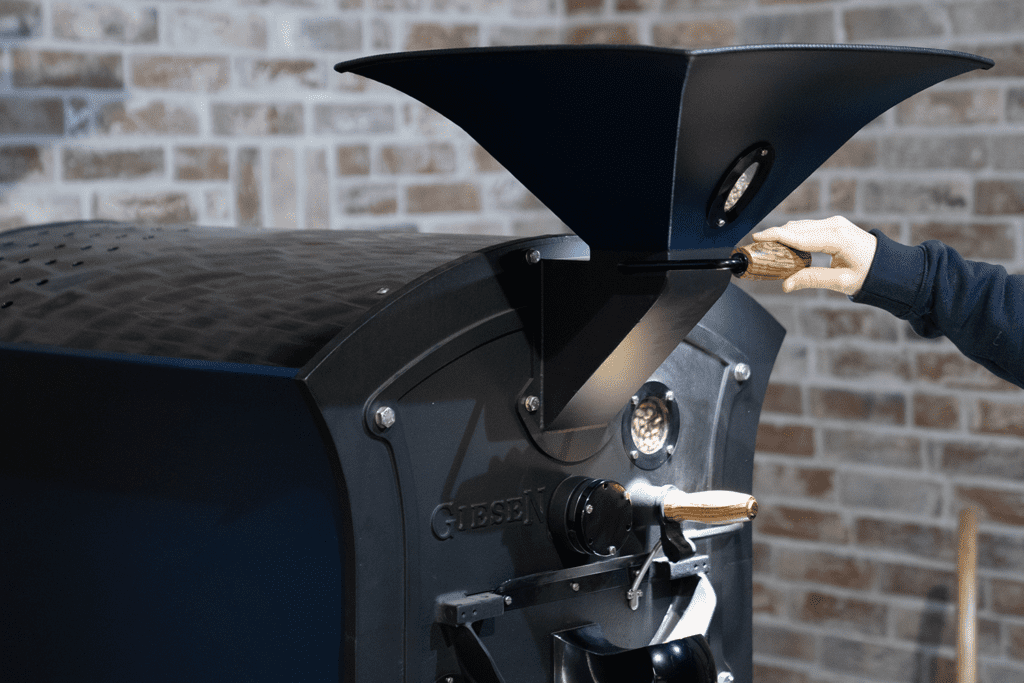Cold-brew coffee; a type of coffee that has gained much popularity over the years. The name of the beverage does not say anything about the temperature at which you drink the coffee. It represents the way you prepare the coffee. You grind the roasted beans and then soak them in room-temperature water for an extended period of time. This method results in a smooth coffee with little acid-like flavors, and a high level of caffeine. Roasting coffee for this method, however, requires a slightly different approach than roasting for ‘normal’ coffee, which we would like to tell you more about in this blog.
About the beverage
In order to understand the roasting process for cold brew coffee, we must first understand what this beverage is exactly, and what characteristics we are looking for in the roast. In terms of the brewing method, cold brew is made by soaking ground coffee in cold / room temperature water. This needs to be done for a minimal time period of 12 hours in order to extract all sugars, oils, and caffeine from the coffee. Talking about the flavor, you can tell that cold brew coffee contains little acidity which is caused by the brewing method. You will experience that this results in a smooth, more accessible taste.
Cold brew coffee has many enthusiasts nowadays, which is not surprising; the beverage offers many advantages and possibilities and therefore appeals to a wide audience. As a coffee roaster, do you want to include cold brew roasts in your range, or do you want to offer cold brew drinks yourself? In the remainder of this blog, we will discuss the various points that you should take into account when roasting coffee specifically for this type of coffee.
Roasting coffee for cold brew
As a coffee roaster, you will understand that not all coffee roasts are 100% compatible with every brewing method. Certain properties in your roast or blend can be intended for a specific way of making coffee. When you decide to roast coffee for cold brew, it is important to determine which properties you are looking for.
During webinar # 8, David Sutfin, Giesen USA, explained how their own cold brew recipe came about. David: “A couple of years ago I had my cold brew “god-shot” at Cuvee Coffee in Austin Texas. I wasn’t sure if it was so delicious because they roast on a Giesen machine, the brew method, or coffee. Maybe it was a little of all three. I was really very impressed by what this drink could be!”
David started roasting coffee specifically developed for cold brew about four years ago. He began experimenting with different coffee types and roast methods. Ultimately, David settled on a blend that is fermented using the Honey method and ensures a smooth, balanced taste; the Colombia Nariño from Cantura, Colombia.
“The Giesen roaster gives us the ability to try iterate profiles and to easily save the profiles to reproduce with the Giesen Profiler software.”
David Sutfin
The image below shows the roast profile that Giesen USA uses to roast their blend. Ultimately, this is the profile David came up with after using different roasting techniques and cupping the results. David: “The Giesen roaster gives us the ability to try iterate profiles and to easily save the profiles to reproduce with the Giesen Profiler software.”

Cupping the roasting results
Giesen ambassador Willem Boot and coffee professional Marcus Young received samples of the Mechanic Coffee cold brew blend and used their Giesen WPG1 sample roaster to sample the coffee, which produced some striking results! The first crack occurred at 9:32, and the roast was completed at 11:15. This with a development time of 1:43 and a development percentage of 15.3%. Curious about Willem and Marcus’ opinion about the cupping results? Check out the video recording of webinar # 7!
The next webinar is on the 18th of December, where we will cover additional topics related to coffee roasting, and we will do a live roasting session. Of course, there will be plenty of time for Q&A as well.
Check out the Giesen blog articles here.




